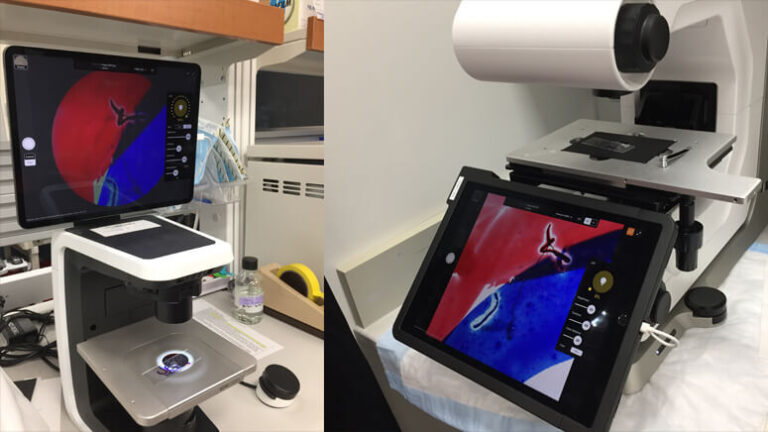News
15 April 2025
Light sheet microscopy: A decade-long journey from DIY innovation to cutting-edge imaging
A look at the technology that provides researchers with deeper insights into complex biological systems.
Read Article
News
Two innovative microscopes offering versatility and a streamlined user experience were installed at the Stowers Institute

Two innovative microscopes offering versatility and a streamlined user experience were installed at the Stowers Institute recently. Currently located in the Yu Lab and the Tissue Culture Lab, these microscopes are hybrids, able to easily switch from an upright configuration, typically used for viewing glass slides, to an inverted configuration for viewing specimen dishes.
This is a useful feature in labs, where researchers often need both functions throughout the day. For example, Yu Lab Postdoc Yunming Wu does biochemical experiments where he dissects a sample while the microscope is in the upright position, but he also needs to capture fluorescent images of a different part of the tissue with the inverted position. With this hybrid microscope, he can complete the dissection, protein extraction, slide preparation, and imaging all within a few seconds and get more data than with traditional instruments.
The other key feature of these microscopes is the use of a tablet screen rather than a traditional eyepiece, which does more than make a more comfortable viewing experience. The tablet is connected to the camera and computer within the instrument. This makes it simple to view, zoom in, and share high-quality images within moments. “It lets you save images on the spot,” says Rahul Garg, a predoctoral researcher in the Yu Lab. “So you don’t have to go up two floors to look on the confocal microscope in the Microscopy lab for every image.”
The large screen and instant viewing make it easy for multiple researchers to observe an image simultaneously. The biggest benefit for the Tissue Culture team is in teaching and training, especially for groups. “This does an excellent job,” says Chongbei Zhao, head of Tissue Culture and Media Prep. “It’s a better platform than the traditional microscope, where each person has to look in the eyepiece individually. With that, if you’re trying to look at the same spot on a sample, you have to try to tell the other person exactly where to look. With this, you can show them directly.”
News
15 April 2025
A look at the technology that provides researchers with deeper insights into complex biological systems.
Read Article
News
11 April 2025
“There are few rewards as powerful and as elevating as making a clear, robust scientific observation that advances the field.”
Read Article
News

09 April 2025
New study shows how we can better learn our genome’s hidden grammar, potentially paving the way for personalized medicine.
Read Article
